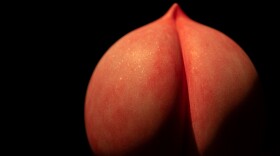The winter storm hitting Connecticut is bringing "light, fluffy snow" to many parts of the state. Have you wondered what exactly makes the snow fluffy?

At around 15F, according to studies done in the Rocky Mountains, snowfall is at its fluffiest and lowest density, as long as winds are light. If the air is colder, the snowflakes may be composed of smaller crystals, and pack more tightly when they fall.
Snowflakes are ordinarily less than half an inch in diameter. They can get pretty big, though -- close to two inches across at their biggest, estimates say, under near-freezing temperatures -- but their size can vary a great deal.
Snow appears white because of the complexity of the ice crystals, efficiently reflecting light from many tiny surfaces. Objects that absorb a bit of light end up appearing to have a color -- but not snow, since it absorbs so little, and what sunlight it does absorb is uniform.
Have you noticed that snow absorbs sound, too? When there's a fresh, fluffy snowfall, sound waves are absorbed and can create a sense of quiet and calm. Of course, that changes if the snow hardens and becomes dense over time -- then, the snowpack reflects sound, and helps it travel farther.
The science of examining snowflakes has come a long way since the 1960s, when Edward LaChapelle's Field Guide to Snow Crystals used an ice classification system of just ten types. A newer system is used today of 80 types of snow crystals, if you can get a long enough look at them to determine anything.

Snowflakes can be surprising. "These perfectly symmetric, six-sided snowflakes, while beautiful, are exceedingly rare -- perhaps one-in-a-thousand at the most," said Tim Garret of the University of Utah at the website phys.org. "Snow is almost never a single, simple crystal." He said that snowflakes can experience "riming," where millions of water droplets collide with a snowflake and freeze on it, forming an ice pellet. Or snowflakes can collide with each other, becoming even fluffier.

The University of Utah developed a camera to photograph snowflakes as they fall. The resulting images show plenty of variety in the ice crystals, making it possible to record their size, shape, and mass. The research could help to improve weather models that simulate precipitation.




